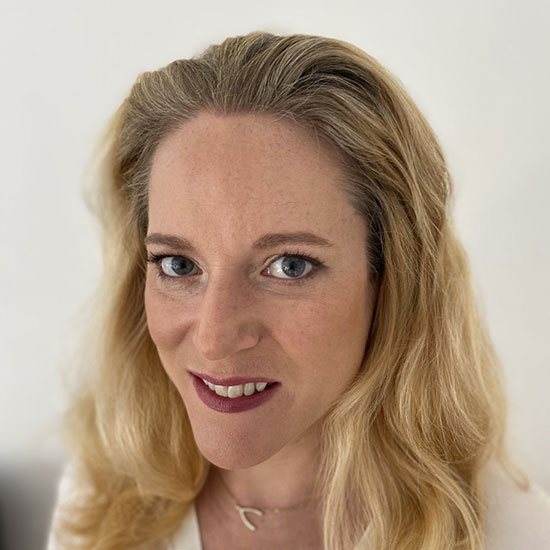IT Campaign Playbook: CIOs Share Tips for a Successful CRM Enterprise Transition
Former Tambellini Author

Election day may have come and gone, but political experts will continue to examine and pick apart every candidate’s results to make sense of why their campaigns worked or failed.
While higher education technology leaders aren’t elected officials, the most effective ones know that the path to a successful digital transformation begins with a strong campaign to rally a diverse coalition of stakeholders and constituents behind their vision.
Nowhere is this more apparent than when IT leaders embark on the long journey to modernize their CRM enterprise. Institutions are keen to consolidate their systems across CRM functions to streamline data sharing across the student life cycle, enable better coordination across silos, and increase efficiencies.
The appeal seems obvious — who wouldn’t want to save time and resources? But the massive scale of transformation requires technology leaders who can do a lot more than evaluate and select CRM solutions.
“It’s not about which tools you choose,” says Richard Holmgren, CIO and Vice President for Information Services and Planning at Allegheny College. “You have to understand each department’s needs, ensure they are aligned with institutional priorities and secure adequate resources to make the necessary changes to meet those needs.”
To help their fellow higher education technology leaders embarking on this journey, we asked some politically savvy CIOs to share their insider tips for running a successful CRM enterprise transition campaign.
1. Begin your road tour at the grassroots level.
Building trust starts with a willingness to listen and learn. Every technology leader we spoke with emphasized the importance of garnering buy-in at the grassroots level, not just from top administrators. Converting the entire enterprise requires a commitment to understanding the challenges and motivations each department faces.
According to Dennis Cromwell, Associate Vice President for Constituent Success for Indiana University’s seven campuses, having support from institutional leadership helps, but it’s by no means enough. That’s why he makes a point to kick off any new project by meeting with each departmental leader at their own office.
“I find people are more likely to be honest about the good and bad when they’re in their comfort zone on their home turf,” said Cromwell. “If I don’t take the time to build their trust and understand their situation, I’m not going to choose solutions that fit their needs.”
A few years ago, the admissions office at the University of Michigan-Dearborn implemented Salesforce and TargetX. Dearborn’s CIO, Carrie Shumaker, saw how well the platform’s scalability and other features worked for admissions and tried to sell her chancellor on how great it would be to expand the CRM platform across the entire enterprise.
Despite her enthusiasm, campus leaders “just weren’t really compelled to spend a lot of time or capital” on her proposed effort—ditto for when she tried to make the same case to the new vice president of enrollment management.
Shumaker’s plan didn’t gain traction until she spent more time listening to associate provosts and student academic advisers talk about some of the pain points in their existing operations.
“One overall goal they had identified was improving the student experience through better communication and coordination across all the various functions they interact with throughout the student life cycle,” said Shumaker. “When I shifted the conversation to how enterprise CRM would facilitate that, they were willing to give it a try.”
2. Build stakeholder coalitions by showing value.
Success depends on identifying the right stakeholders and converting them into supportive surrogates. Their commitment to putting in the day to day effort is essential to the long-term success of consolidation initiatives.
At Dearborn, Shumaker knew the process for students to submit a petition to have a prerequisite course waived was paper-based and arduous. She quickly implemented a pilot project to streamline petition submissions into the salesforce workflow.
“When academic leaders saw how much easier it was to track and modify petitions, it built a lot of early goodwill and momentum for continuing down that road,” said Shumaker. “I could have said it would do that, but their positive firsthand experience was what really convinced them.”
According to John Rathje, CIO and VP of Information Technology at Kent State University in Ohio, the sheer volume of staff time and training CRM overhauls require can deter a lot of would-be supporters.
“Change can be scary to a lot of people, especially when they are resource-intensive,” said Rathje. “We focused on how these changes aligned with the institutional mission and provided LEAN training and exercises to support their transition efforts. This helped siloed departments overcome their apprehension and know that we were invested in supporting them.”
3. Be transparent and communicate often.
Enterprise CRM modernization is a continuous process, and enthusiasm can quickly wane if new platforms fall short of expectations. Sometimes constituents are overly optimistic about what a new platform can do and how long it will take to implement fully.
“I learned I have to do my homework to separate the hype and the potential of technology systems or people get disappointed and cynical,” said Holmgren at Allegheny College. “We need to communicate what we can realistically deliver with our resources.”
For Cromwell at Indiana University, this involves a detailed communications plan regularly evaluated and modified, including a newsletter with progress updates on meeting key milestones and frank explanations of why some initiatives flounder.
“Your next step is dictated by what you do today,” said Cromwell. “My past experience has taught me that when a technology initiative isn’t working, it’s better to openly admit it and explain why so you can keep the trust of your constituents and find something better.”
A comprehensive CRM modernization project entails massive changes to business processes and a workplace culture that must be coordinated across numerous functional areas with varying priorities. Although it’s challenging, the most successful candidates understand that it’s not impossible.
Categories
- Academic Administration
- Advancement
- AI and ML
- Content Management
- CRM Platforms
- Customer Experience (CX)
- Cybersecurity
- Data Management and Analytics
- Enterprise Portals and Mobile Apps
- Event Management
- Finance
- HCM/HR
- IT Tools and Infrastructure
- Life at Tambellini
- Services
- Student
- Teaching and Learning
- Technology Leadership
- Thought Leadership
- Uncategorized
Share Article:

Other Posts From this Author:
© Copyright 2025, The Tambellini Group. All Rights Reserved.